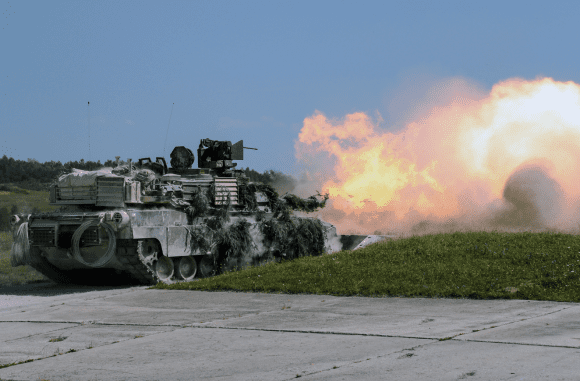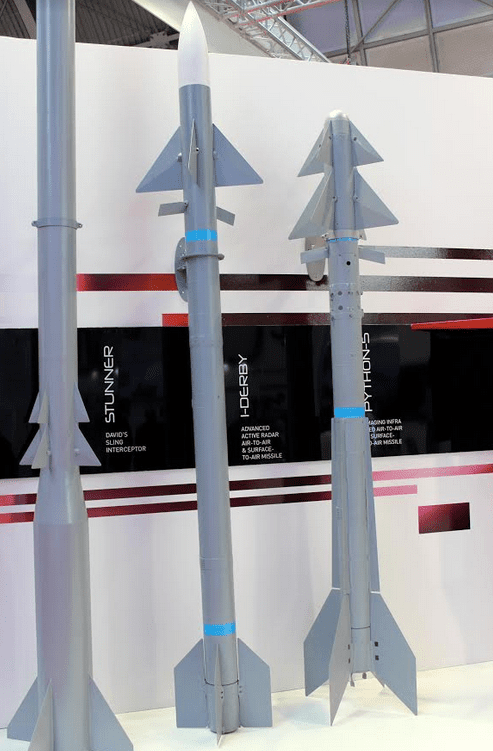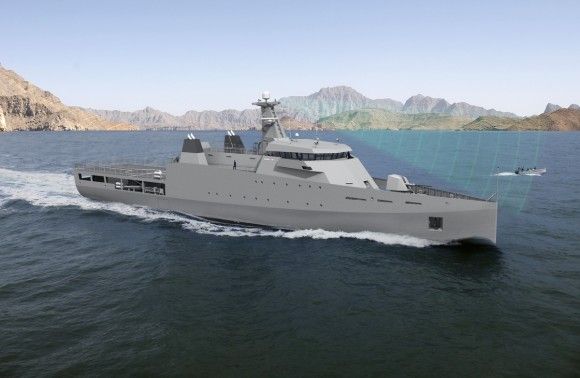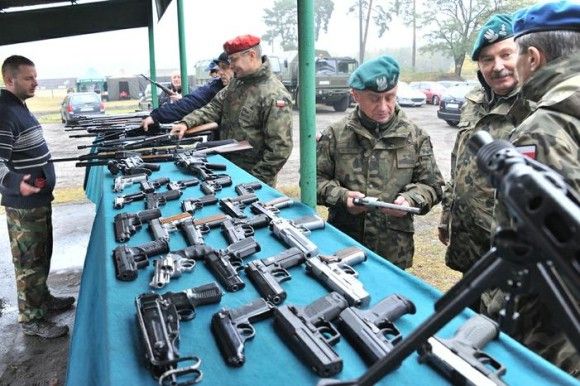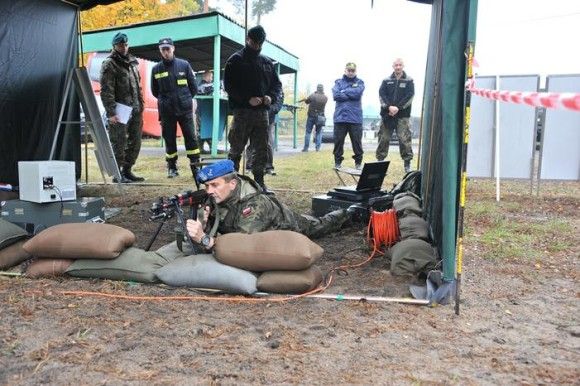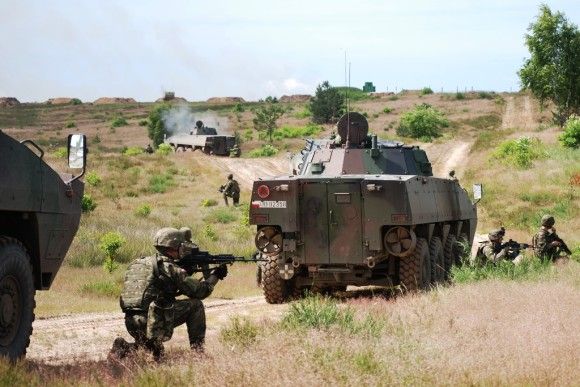Poland Looks Towards Space. Satellite Programme Begins [Space24.pl]
The upcoming year may have a decisive value, when it comes to the Polish satellite programme. A key tender is planned to be initiated, pertaining the Earth Observation satellite(s). Moreover, initial feasibility studies related to several other orbital systems are also being planned. It is worth to mention the fact that the currently developed programmes will be usable both in military, as well as in civilian applications. They will also make contribution to the Polish science, and without any doubt, they are going to have an impact on development of the Polish space industry.
The plans related to construction works pertaining the Polish satellites shall be treated as long term initiatives. In case of the optoelectronic satellite, the programme is expected to last for at least seven years. Despite the above, we should have a look on the capabilities that may be offered by new space systems. Moreover, it is worth to add that the satellites that are planned to be developed will be used both in military, as well as in civilian applications. They will also make contribution to the Polish science, and without any doubt, they are going to have an impact on development of the Polish space industry.
Priority for Poland: Own Earth Observation and SAR systems
The most important tender, expected to be announced next year, is the one related to optoelectronic satellite(s). According to the 2015 feasibility study developed by the Military University of Technology, with involvement of the Space Research Centre of the Polish Academy of Sciences, carried out for the National Centre For Research and Development, regarding the satellite-based system that would make it possible to optoelectronically observe the Earth, acquisition of two satellites would be the best option for Poland. One would make it possible to carry out high resolution (1-2 meters) observation, while the second one would facilitate very high resolution observations (from 0.5 to 0.7 meters – VHR).
Two satellites would be complementary, and the revisit time would be significantly shortened, thus the gathered data would be less outdated. The HR satellite could be used both for military, as well as for civilian applications, fulfilling the assumptions resulting from the requirement of creating a double purpose system, delivering the information both for the Army, as well as for the national services, e.g. in case of natural catastrophes. The system could also be utilized in the process of monitoring the water levels or pollution levels. VHR satellite, on the other hand, would be used solely for military purposes. Within the scope of the prepared study, not only is the final system going to include the satellite itself, as it is going to be complemented with a simulator and the ground-based segment.
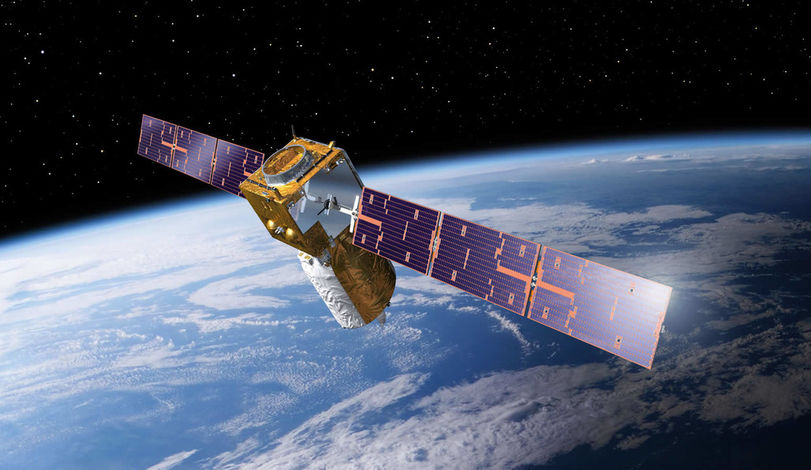
However, we do not know, at the moment, whether the Polish Space Agency would decide to start a tender, in line with the assumptions of the study. The procedure may alternatively be realized as a national strategic programme. The main goal of the whole programme would be to create a national visual reconnaissance system that would provide Poland with data in the visible light and infra-red spectra. Secondly, the study is to support the Polish aerospace and space industry, within the scope of technology development, realized during implementation of the programme, the aim of which is to create the observation satellite.
In the light of the reasons outlined above, it shall be expected that the Polish space sector would get deeply involved in creation of the capabilities for the Polish Armed Forces. The whole programme will become an accelerator, for quicker development of the relevant capabilities. However, it shall not be assumed that the Polish space industry would be capable of creating so advanced system independently, even in 7 years that are expected to be the term required to realize the project. In the light of the reasons outlined above, one of the large foreign companies is going to become the main contractor. It depends on the steps taken by the Polish negotiators, how large part of that programme is going to be realized domestically. Here, the stakes are high, since development of a single satellite may cost even 700 million zlotys.
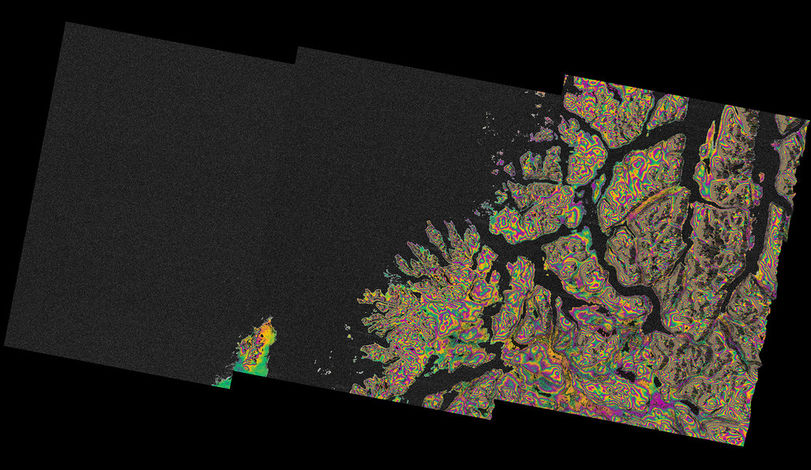
At the end of 2015, Polish Space Agency ordered the initial feasibility study from the PZL “Warszawa-OKĘCIE” S.A. company, covering the potential creation of a satellite-based radar imaging system. The results of the above works shall be made available this year. Currently, according to the agreement between the Polish Ministry of Defence and its Italian counterpart, Poland acquires the SAR data from the Italian COSMO-SkyMed Seconda Generazione satellites. However, in line with the plans of the Polish Space Agency, Poland is going to take steps towards gaining own capabilities within that scope. The SAR satellite (Synthetic Aperture Radar) is going to be used both by the military, as well as for economic and administrative purposes. After the works are finalized by the experts of the PZL “Warszawa-Okęcie” S.A. facility, schedule and cost of creating such equipment shall be known, along with the recommended technologies and potential, domestic and foreign, contractors.
Read More: Will Poland Create a SAR Satellite?
Research Gap: UV Sat
Besides the reconnaissance satellites, Polish Space Agency is also willing to develop scientific systems. In the light of the above, in 2015, a competition was announced, the aim of which is to develop an initial feasibility study regarding an UV-spectrum observation satellite that would be used to carry out space research. The UVSat satellite would be used to change the variability of a variety of space objects, including stars, binary systems, accretion disks, cores, nebulas, galaxies, gamma flash halos or early phases of supernova explosions.
It is worth to add the fact that such equipment would cover a large research gap, since only the Indian Astrosat observatory satellite is, at the moment, capable of providing UV imagery of space from the orbit. Notably though, the measurement capabilities offered by the telescopes mounted on-board the Indian satellite are narrower, than the ones that are to be implemented in case of the Polish design.
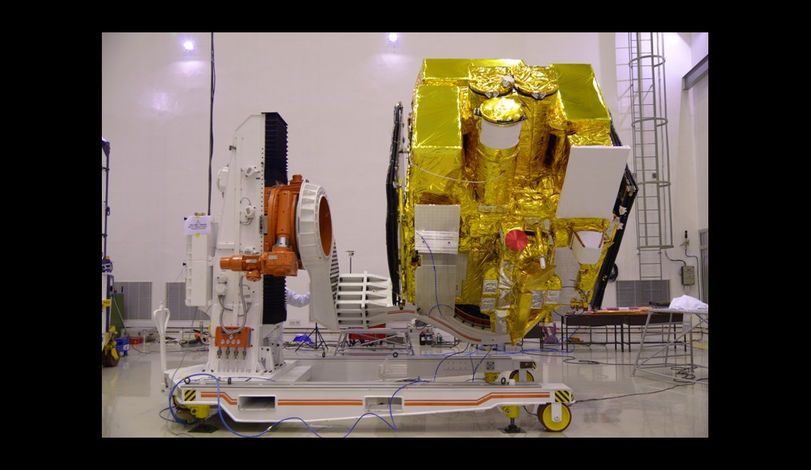
During the process in which the satellite is built, the Polish research and engineering potential shall be used. The involved companies would include Creotech Instruments, Hertz Systems, Astri Polska, Sener Polska, Astronika or PCO. Secondly, the development programme would also involve the Space Research Centre of the Polish Academy of Science, along with the Rzeszów and Silesian Universities of Technology. Cost of the whole project was estimated to be contained in an amount ranging from PLN 50 to 150 million. The initial feasibility study was described during the “Poland in Space” conference, organized at the Institute of Aviation, as one of the three main POLSA’s priorities, besides the SAR satellite and the space situational awareness system.
Read More: Poland in Space 2015: UVSat Sattelite Concept
Polish Industry Submits Satellite Ideas to ESA
The Polish industry is also submitting an idea to ESA, to create a satellite which may be used to collect the signals sent by the ships, so that their positions are known e.g. to the Search and Rescue services. It is possible that ESA would order a feasibility study pertaining this programme this year.
PW-Sat 2: Future engineers trained during the student programmes
A separate, and very important issue, from the educational point of view, related to the competent human resources flow, required to create the space industry, is visible in the student programmes. The first Polish satellite, created by the members of the Astronautic Student Group of the Warsaw University of Technology, with support provided by the Polish Academy of Sciences Centre for Space Research, entered orbit in February 2012, and remained active until October 2014. The cost of the whole project related to this small CubeSat satellite (1 kg of weight, 10 centimetres of side length) was contained in an amount of PLN 200 thousand.
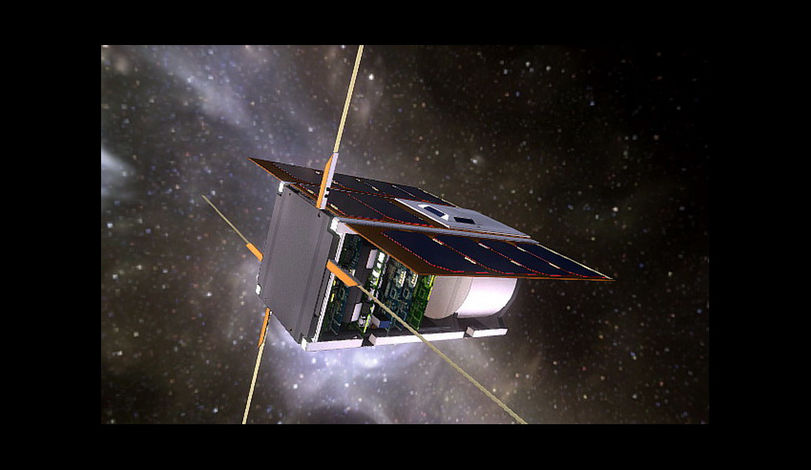
At the moment, the team of students and PhD candidates of the Warsaw University of Technology is working on a larger PW-Sat 2 satellite. The project received EUR 180 thousand in funding, provided by the Polish Ministry of Science and Higher Education. This gives us hope that the satellite is going to be sent into orbit according to the initial plans, next year. PW-Sat 2 is designed as a CubeSat 2U satellite, with dimensions of 20x10x10 cm. The main research goal of the project, carried out by the young scientists of the Warsaw University of Technology, is to execute a series of experiments related to the new technological solutions.
The most important is the de-orbiting sail, which is to make it possible to remove the satellite from the orbit quicker, once its mission is completed. In the light of the problems posed by the space debris, removal of the old equipment from the orbit, and burning it down when it enters the Earth’s atmosphere becomes a priority for the creators of the new satellites. If the solution applied by the Polish scientists turns out to be effective, there is a significant chance that such system would be manufactured by the Polish companies, and consequently, it would become a component which could potentially be procured by a wide variety of customers, all around the world. Similar situation exists when it comes to the solar sensors that are used to define the satellite position in relation to the sun. Such system is also going to be implemented in case of the PW-SAT 2 satellite.
What’s next?
After many years of stagnation, caused by the fact that no national space agency existed, Poland is now willing to realistically join the elite group of countries that are capable of creating their own satellites. This is an ambitious goal, without any doubts. Realization of that goal will take years, and it is going to require a technology transfer from the countries which have gathered more experience in the field. Without any doubt, should Poland be successful in its effort, a number of advantages will remain at our disposal. Within the military dimension we would become independent from the foreign data sources, allowing Poland to get access to the information related to potential threats independently from the political will of the third parties. This is required to fully utilize the Polish deterrence system, featuring the long range JASSM cruise missiles. Own satellites will also be useful for the civilian services, e.g. in case of natural catastrophes, such as the floods.
For the space sector, the technology transfer and development of the skills in the area related to the satellites may accelerate the growth and development of this industry. In the future, the above will also make it possible to compete against the companies from the Western Europe, giving Warsaw a chance for large revenue and profit from the market related to the satellite orders submitted by ESA and other entities.
